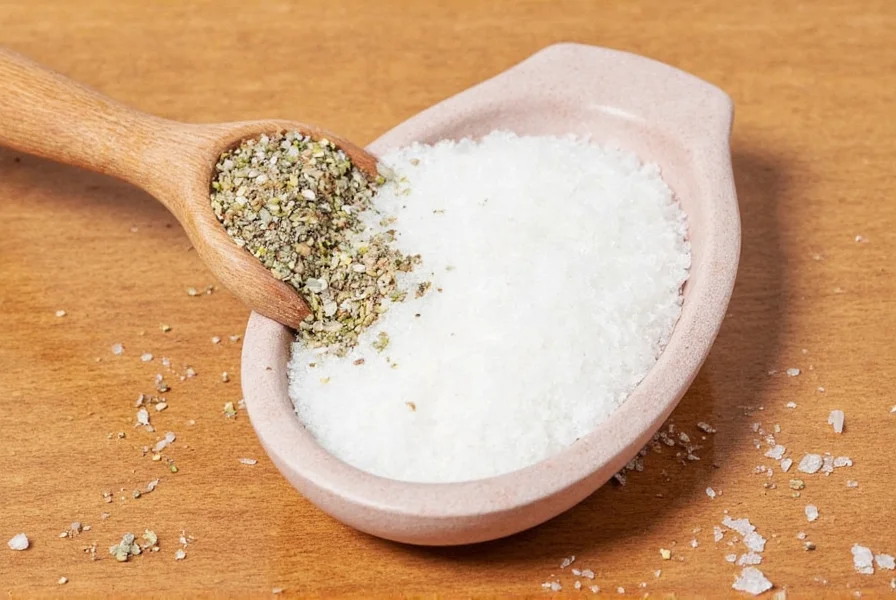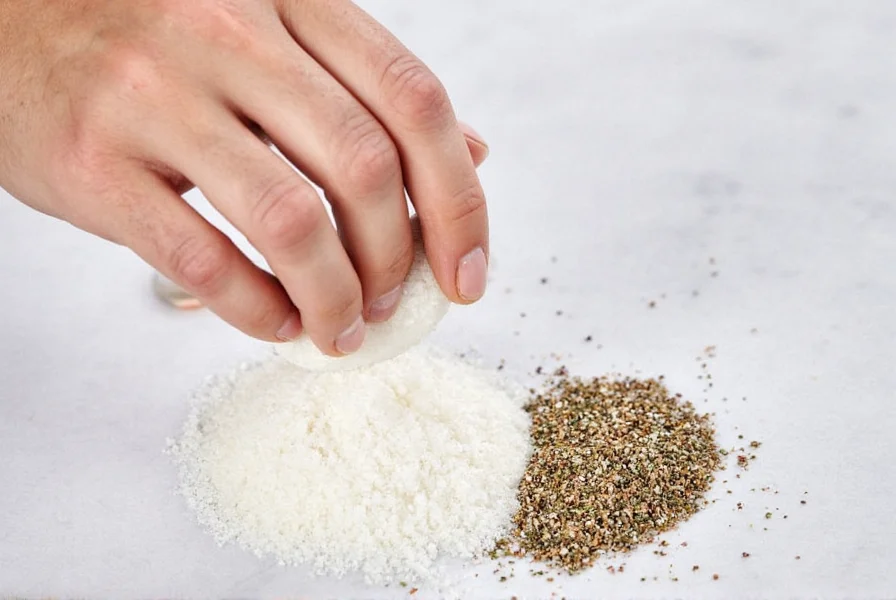Seasoning Salt: The Flavorful Secret to Elevating Every Dish
Have you ever wondered how some chefs and home cooks make their meals taste so good? While the main ingredients matter, it's often the small touches that make all the difference. One of those small yet powerful additions is seasoning salt. In this article, we'll explore what seasoning salt is, why it’s a must-have in every kitchen, and how to use it like a pro. Whether you're an amateur enthusiast or a seasoned cook, this guide will give you practical tips, in-depth explanations, and a few fun facts along the way.
Table of Contents
- What Is Seasoning Salt?
- Types of Seasoning Salt
- How to Use Seasoning Salt
- Seasoning Salt vs. Regular Salt
- Buying Guide for Seasoning Salt
- Top 5 Seasoning Salts You Should Try
- Conclusion
What Is Seasoning Salt?
Seasoning salt is a blend of salt and various herbs, spices, and sometimes other flavor-enhancing ingredients. Unlike regular table salt, which is just sodium chloride, seasoning salt is designed to add both saltiness and complexity to your dishes. It’s a versatile tool that can be used in everything from grilled meats to roasted vegetables, and even in baking.
The key benefit of seasoning salt is that it provides a more rounded flavor profile. Instead of just adding salt, it also introduces savory, smoky, or tangy notes depending on the blend. This makes it ideal for those who want to enhance their cooking without having to mix multiple seasonings together.

Types of Seasoning Salt
There are countless types of seasoning salts available, each with its own unique combination of ingredients. Here are some of the most common varieties:
- Cajun Seasoning Salt: A spicy blend often containing paprika, garlic powder, onion powder, cayenne pepper, and black pepper.
- Italian Seasoning Salt: Typically includes oregano, basil, thyme, rosemary, and garlic.
- Garlic Herb Seasoning Salt: Combines garlic, parsley, dill, and other herbs for a fresh, savory flavor.
- Smoky Seasoning Salt: Features smoked paprika, chili powder, and other smoky elements for a deep, rich taste.
- Lemon Pepper Seasoning Salt: Adds a zesty kick with lemon zest and black pepper.
Each type has its own best uses, and choosing the right one depends on the dish you're preparing. For example, a Cajun blend works wonders on grilled chicken or shrimp, while an Italian seasoning salt is perfect for pasta sauces or tomato-based dishes.
How to Use Seasoning Salt
Using seasoning salt is simple, but there are a few tips to keep in mind to get the most out of it:
- Use it as a rub: Sprinkle seasoning salt over meat before grilling, roasting, or frying for extra flavor and a nice crust.
- Add it to soups and stews: A pinch of seasoning salt can elevate the overall taste of your broths and soups.
- Mix it into dips and dressings: Add it to homemade ranch, guacamole, or vinaigrettes for a burst of flavor.
- Season vegetables: Toss roasted or steamed veggies with seasoning salt for a quick and easy side dish.
- Experiment with recipes: Don’t be afraid to try different blends in new recipes — sometimes the best results come from unexpected combinations.
A word of caution: seasoning salt can be quite strong, so start with a small amount and adjust to taste. You can always add more, but you can’t take it away once it’s in the dish.

Seasoning Salt vs. Regular Salt
If you’ve ever looked at a bottle of seasoning salt and wondered how it differs from regular salt, you’re not alone. Let’s break it down:
| Feature | Regular Salt | Seasoning Salt |
|---|---|---|
| Ingredients | Sodium chloride (salt) | Salt + herbs, spices, and other flavor enhancers |
| Flavor | Salty only | Complex and multi-dimensional |
| Usage | General-purpose seasoning | Specific flavor profiles for different dishes |
| Storage | Typically stored in a shaker | Usually in a jar or container with a lid |
| Cost | More affordable | Can be pricier depending on the blend |
While regular salt is essential for any kitchen, seasoning salt offers convenience and enhanced flavor. It’s especially useful when you want to add a quick burst of taste without going through the hassle of mixing individual spices.
Buying Guide for Seasoning Salt
When shopping for seasoning salt, consider the following factors to find the best option for your needs:
1. Flavor Profile
Choose a seasoning salt that matches the type of cuisine you enjoy. For example, if you love Mexican food, a chili-lime blend might be perfect. If you prefer Mediterranean flavors, look for a mix with oregano, thyme, and rosemary.
2. Ingredients
Check the label to see what’s in the seasoning salt. Some blends may contain preservatives, fillers, or artificial flavorings, while others are made with natural ingredients. If you prefer a more organic or clean label product, opt for those with minimal additives.
3. Brand Reputation
Some well-known brands have built a reputation for quality seasoning salts. Look for products from trusted names such as McCormick, Lawry’s, or Mrs. Dash. These brands often offer a wide range of flavors and consistent quality.
4. Use Cases
Consider how you plan to use the seasoning salt. If you’re into grilling, a smoky or spicy blend might work best. If you’re more into baking or light dishes, a citrus or herb-based salt could be more suitable.
5. Price Range
Seasoning salts can vary widely in price. Basic blends are usually more affordable, while specialty or gourmet options can be pricier. Decide on your budget and choose a product that fits your needs and preferences.
One of the most important things to remember about seasoning salt is that it should be used thoughtfully. It’s a powerful tool, but like any spice, it’s best used in moderation to bring out the natural flavors of your ingredients.
Top 5 Seasoning Salts You Should Try
Here are five popular seasoning salts that are worth trying in your kitchen:
- Mrs. Dash Original Seasoning Salt: A classic blend with garlic, onion, black pepper, and paprika. Great for everyday cooking.
- McCormick Garlic & Herb Seasoning Salt: Perfect for adding a fresh, savory touch to meats and vegetables.
- Lawry’s Seasoned Salt: A bold, all-purpose seasoning that works well on grilled foods and roasted dishes.
- Chili-Lime Seasoning Salt: Ideal for Mexican-inspired dishes like tacos, fajitas, and grilled fish.
- Herbes de Provence Seasoning Salt: A fragrant blend of lavender, thyme, rosemary, and oregano — perfect for French cuisine.
Each of these salts has its own unique characteristics and can be used in a variety of ways. Experimenting with different blends can help you discover new flavor combinations that suit your taste.
Conclusion
Seasoning salt is more than just a simple addition to your meals — it’s a powerful flavor enhancer that can transform ordinary dishes into something truly special. Whether you're looking to add a bit of heat, a hint of freshness, or a deep, smoky flavor, there’s a seasoning salt that fits your needs.
By understanding the different types of seasoning salt, how to use them effectively, and where to buy them, you’ll be well on your way to becoming a more confident and creative cook. Remember, the key to great seasoning is balance — use it wisely, and let the natural flavors of your ingredients shine through.
So next time you reach for the salt shaker, think about giving your dish a little extra with a sprinkle of seasoning salt. Your taste buds will thank you!










 浙公网安备
33010002000092号
浙公网安备
33010002000092号 浙B2-20120091-4
浙B2-20120091-4